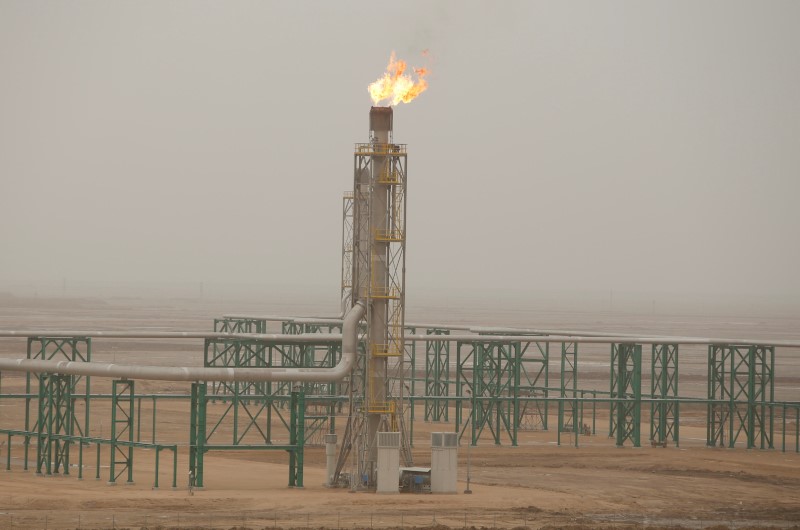
FILE PHOTO: Excess gas is burnt off at a pipeline at the Zubair oilfield in Basra, Iraq May 9, 2018. REUTERS/Essam al-Sudani
July 5, 2018
By Henning Gloystein
SINGAPORE (Reuters) – Oil prices fell on Thursday after U.S. President Donald Trump sent a strident tweet demanding that OPEC cut prices for crude.
Brent crude futures <LCOc1> were at $77.70 per barrel at 0250 GMT, down 54 cents, or 0.7 percent, from their last close.
U.S. West Texas Intermediate (WTI) crude futures <CLc1> were down 26 cents, or 0.4 percent, at $73.88 per barrel.
Trump on Wednesday accused the Organization of Petroleum Exporting Countries (OPEC) of driving up fuel prices.
“The OPEC Monopoly must remember that gas prices are up & they are doing little to help,” Trump wrote on his personal Twitter account. “If anything, they are driving prices higher as the United States defends many of their members for very little $’s.”
This must be a two way street,” he wrote, adding in block capitals, “REDUCE PRICING NOW!”
“With contentious midterm U.S. elections looming, the President continues to strong-arm Saudi Arabia to increase oil supplies which, at least for now, is containing price action below WTI $75 per barrel,” said Stephen Innes, Head of Trading for Asia/Pacific at futures brokerage OANDA.
OPEC together with a group of non-OPEC producers led by Russia started to withhold output in 2017 to prop up prices.
Recent price rises have also been spurred by a U.S. announcement that it plans to re-introduce sanctions against Iran from November, which will also target its oil industry.
“A key driver of the rise in prices has been the OPEC-Russia deal to cut oil output, compounded by collapsing Venezuelan production and the U.S. decision to end the Iran deal,” National Australia Bank (NAB) said in its July outlook.
OPEC and Russia announced in June they were willing to raise output to address concerns of emerging supply shortages due to unplanned disruptions from Venezuela to Libya, and likely also to replace a potential fall in Iranian supplies due to U.S. sanctions.
NAB said its oil price forecasts “point to Brent spending the next few months largely in the mid-to-high $70s (per barrel) range, although meaningful OPEC-Russia output increases could push prices lower later in the year and higher U.S. shale production should impose an upside limit on WTI.”
Meanwhile, China’s commerce ministry on Thursday warned that U.S. tariffs, which Washington plans to impose on an estimated $34 billion worth of Chinese imports on Friday, will hit global supply chains.
China’s customs agency said on its website that Chinese tariffs on U.S. goods, likely including crude oil supplies which have soared over the last two years, will take effect immediately after U.S. tariffs on China goods kick in.
(Reporting by Henning Gloystein; editing by Richard Pullin)

